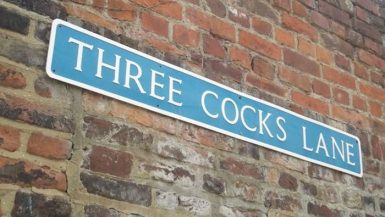Luss, Scotland: A Jewel on Loch Lomond’s Shores
Nestled on the western banks of Loch Lomond, the picturesque village of Luss is one of Scotland’s most charming and historically rich destinations. With its flower-lined cottages, sweeping loch views, and deep-rooted clan heritage, Luss offers a perfect blend of tranquility, tradition, and timeless beauty. Whether you’re exploring the Loch Lomond & The Trossachs National Park, tracing clan history, or simply soaking in the scenery, Luss is a gateway to the soul of the Highlands.
🏞️ The Village of Luss: Beauty and Heritage
Luss is a conservation village, meaning its traditional architecture and layout are carefully preserved. The village’s origins date back over 1,500 years, with early Christian missionaries establishing a church here in the 6th century. Today, Luss Parish Church, rebuilt in 1875, stands as a spiritual and historical centerpiece, with ancient gravestones and a tranquil setting that draws visitors from around the world.
The village is famed for its quaint stone cottages, many of which were built in the 19th century to house workers from nearby slate quarries. These cottages, adorned with vibrant gardens, line the narrow lanes leading to the loch, creating a postcard-perfect scene.
🛡️ Clan Colquhoun: Guardians of Luss
Luss is historically the seat of Clan Colquhoun, one of Scotland’s prominent Lowland clans. The Colquhouns have held lands in the area since the 13th century and played a significant role in regional politics and defense.
- The clan’s ancestral home, Rossdhu House, once stood near Luss and served as the family seat. Though the original house was demolished, the estate is now home to the Loch Lomond Golf Club, a prestigious private course.
- Clan Colquhoun’s tartan and crest are still proudly displayed in Luss, and the village remains a symbolic heartland for clan members worldwide.
- The clan was involved in several historic feuds, including a violent clash with Clan MacGregor in 1603, which led to the MacGregors being outlawed by royal decree.
🏰 Nearby Castles and Historic Sites
While Luss itself is more village than fortress, the surrounding area is rich in castles and historic landmarks:
- Balloch Castle: Located at the southern tip of Loch Lomond, this 19th-century baronial mansion sits within Balloch Country Park. Though not open to the public, the grounds offer scenic walks and lochside views.
- Inchgalbraith Castle Ruins: On a small island in Loch Lomond, these ruins are linked to Clan Galbraith, another local clan with deep ties to the region.
- Inchcailloch Island: Accessible by boat from nearby Balmaha, this island features ancient burial grounds and church ruins associated with Clan MacGregor and early Christian missionaries.
These sites offer a glimpse into Scotland’s layered past—where clans, kings, and saints left their mark on the land.
🌄 Loch Lomond & The Trossachs National Park
Luss lies within the boundaries of Loch Lomond & The Trossachs National Park, Scotland’s first national park and one of its most beloved. The loch itself is the largest inland stretch of water in Great Britain by surface area, and its shores are dotted with islands, forests, and mountains.
From Luss, visitors can:
- Take boat tours across the loch to explore islands like Inchcailloch, Inchmurrin, and Inchtavannach.
- Hike the Luss Heritage Trail, which offers panoramic views of the loch and surrounding hills.
- Enjoy water sports, fishing, and wildlife watching in a pristine natural setting.
The park is a haven for outdoor enthusiasts and a sanctuary for those seeking peace and inspiration.
🏘️ Neighboring Communities: A Tapestry of Highland Life
Luss is surrounded by villages and towns that add depth to the region’s cultural landscape:
- Balloch: A bustling gateway to Loch Lomond, with shops, restaurants, and the Loch Lomond Shores visitor complex.
- Tarbet: Located further north along the loch, Tarbet offers access to Ben Lomond and scenic cruises.
- Arrochar: Nestled at the head of Loch Long, Arrochar is popular with hikers tackling the Arrochar Alps.
- Balmaha: On the eastern shore of Loch Lomond, Balmaha is a launch point for island visits and home to the Tom Weir statue, honoring the famed Scottish explorer and broadcaster.
Each of these communities contributes to the region’s rich tapestry—blending Gaelic tradition, natural beauty, and warm hospitality.
🕰️ Historical Highlights
- Early Christianity: Luss was a center of Christian worship as early as the 6th century, with St. Kessog, an Irish missionary, believed to have preached here. His legacy is honored in local place names and church dedications.
- Clan Feuds: The 1603 battle between Clan Colquhoun and Clan MacGregor near Glen Fruin is one of the most infamous clan conflicts in Scottish history.
- Victorian Tourism: In the 19th century, Luss became a popular destination for Victorian travelers, drawn by its beauty and romantic associations with Loch Lomond.
Final Thoughts
Luss is more than a pretty village—it’s a living chapter of Scotland’s story. From its clan connections and ancient churchyard to its role in the national park and its proximity to castles and islands, Luss offers a rich and rewarding experience for anyone seeking the heart of the Highlands.
Whether you’re wandering its flower-lined lanes, cruising across Loch Lomond, or tracing the footsteps of clans and saints, Luss invites you to slow down, look closer, and feel the timeless spirit of Scotland.
Sources:
- Clan Colquhoun Society
- Loch Lomond & The Trossachs National Park Authority
- Historic Environment Scotland
- Undiscovered Scotland: Luss and Surrounding Villages




Leave a reply
You must be logged in to post a comment.